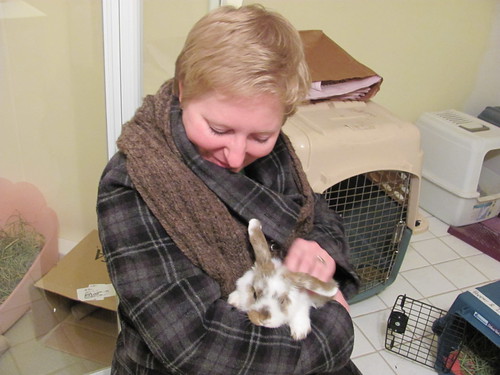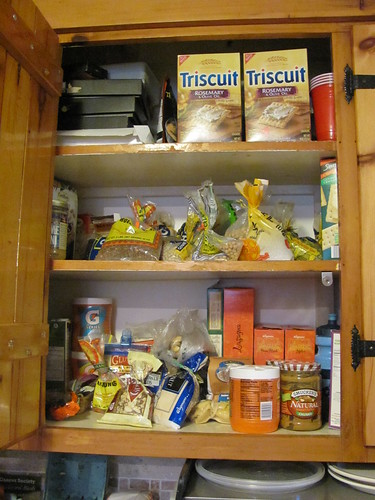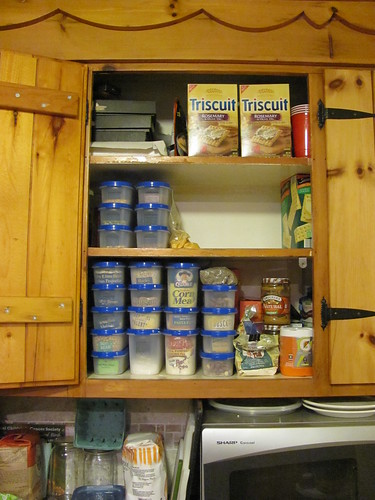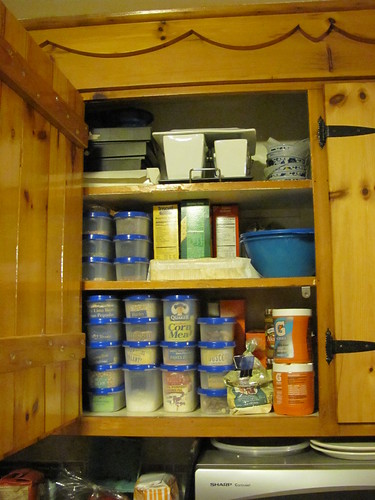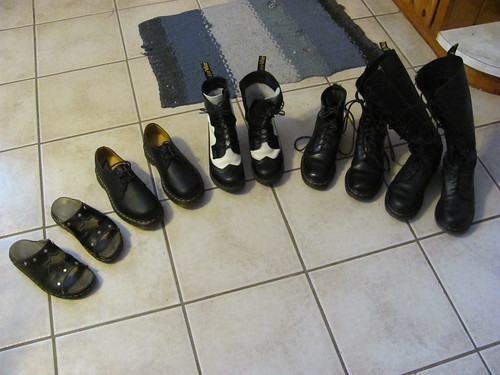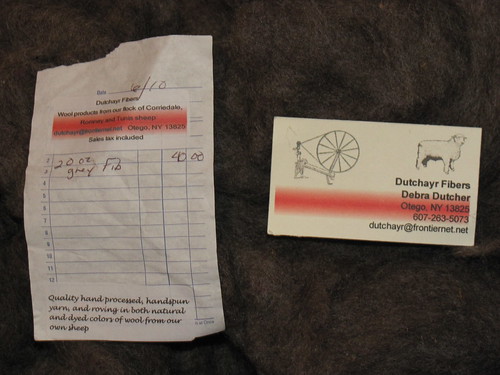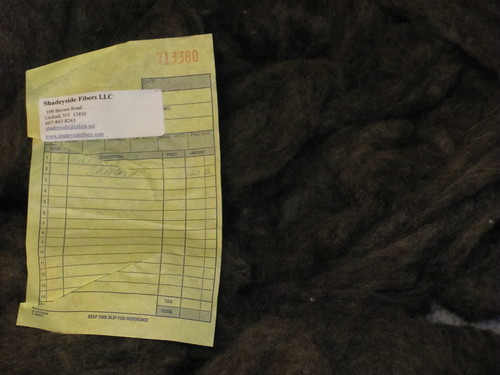Poppa arriving at his new foster home, Blue Skies Forever
I just chauffeured 2 rabbits about 80 miles today. This is pretty common in rescue; the town where animals end up in trouble is not always the town where a rescuer has space for them until they can be adopted into their forever home.
The other thing that is sadly common is rabbits suffering
because of human ignorance and neglect.
It’s an age old story. Someone
went to a pet store and bought a rabbit.
She didn’t do any research before hand on how to take care of rabbits,
and she didn’t do any after the purchase either. She bought the crappy inadequate “rabbit”
stuff the pet store told her to, and went home.
Later, she decided to buy a second rabbit to keep the first
company. This would have been a great
idea, if she had bought the first rabbit a spay or neuter first.
Of course, you’ve guessed what happened next. Here are some interesting facts about rabbit
reproduction. Female rabbits don’t have
a fertility cycle like most mammals.
Instead of ovulating once a month, or once a week, they ovulate in
response to being mounted. In other
words, they are designed to get pregnant every time they have sex. The
gestation period for a rabbit is about a month.
They can get pregnant again only 24 hours after giving birth. They have litters, just like cats and
dogs. One rabbit had a litter of 9 just
after we rescued her. Rabbits have
developed 2 main defenses against predators, run away, and make as many bunnies
as possible so that one of them will survive long enough to reproduce.
So when a human being messes up with rabbits, it only takes
a few months for them to be in over their heads. We see this far too often in rescue. Before I began volunteering at a local
shelter, I didn’t realize how many rabbits are in shelters across the country. My shelter has a waiting list, as most
do. I am lucky to volunteer at a shelter
that does not euthanize any healthy or treatable animals, and to be a member of
The House Rabbit Society and our local chapter, THE Rabbit Resource, both of
which are no-kill rescues. Sadly, many,
many rabbits are euthanized every day at shelters who take in more than they
can adopt out.
I was expecting to drive 4 rabbits today. They are the only 4 survivors of a larger
family, but even though they are survivors, 2 of them continue to have health
problems due to their original owner’s neglect.
So 2 are staying with the rescuer/wildlife rehabilitator who is nursing
them back to health, and 2 got to ride in the car with me. As I mentioned, their family started as two
un-altered rabbits kept together. When
they had a litter, the owner didn’t separate them, so they kept having
litters. Because she didn’t inform
herself about their care, caring for babies, or rabbit behavior, there were
casualties. We don’t know how many, but
we do know that only one baby from the most recent litter survived. This is heartbreaking to me, not just because
of the loss of life, but because it was completely preventable. If she had done some research, she might have
decided that she wasn’t ready for the amount of care and attention even a
single rabbit needs--as much as a dog.
If she was ready for a rabbit, she would have discovered that they are
happiest and healthiest when spayed or neutered, that her local shelter is full
to overflowing, and that adopting an already spayed rabbit is much, much
cheaper than buying that $20 rabbit at the pet store, only to discover that it
will cost $400.00 to get her spayed.
I sometimes feel like I’m fighting a losing
battle with rescue. Pet stores will sell
an animal to anyone, whether they are equipped to care for an animal or
not. My stepson worked for a couple of
pet stores and was infuriated that he wasn’t allowed to tell someone that they
were not capable of taking proper care of an animal. Add to that the fact that few pet stores seem
to train their employees on even the most basic rabbit care, or carry
sufficiently large cages, and most pet store bunnies will end up in awful
situations.
The numbers work against me. As my father likes to point out, half of all people are below average. So a large number of humans buy rabbits without educating themselves. Every time one of them keeps a male and female together they have a litter. Figuring an average litter of 4 rabbits, the female could have 48 babies within a year. But wait, there’s more! Those babies don’t stay babies for a year, by 3 months old, they can start reproducing too, so assuming half the babies are female, after 3 months the original pair has had 12 babies. In month four, the original pair has 4 more, and the two females in generation 1 have 8 between them, so month 4 adds 12 babies. By month 5 we have 5 potential mothers for 20 more babies (44 total) and by month 6 we have 7 mothers and 28 more babies (72 total) and by month 8 generation 1's babies are old enough to have babies and, well, I’m already tired. Plus, they’re all completely inbred, bless their hearts.
This is why I’m dedicated to “getting the word out” about
rabbits. Not just that they are great
pets, which they are, but also that the shelters are full of really wonderful
rabbits who are only there because people let them down. The harder word to get out is that rabbits
aren’t for everyone. They are absolutely
the worst pet for a small child, because they are prey animals, and small
children are the most terrifying of predators.
They are not a “starter pet” or an “easy pet” for someone who “isn’t
ready for a dog yet.” They aren’t for
someone unwilling to do some research and learn their habits and their language
(a body language very unlike what we may already know from cats and dogs). That “easy pet,” no-research-needed mentality
is how my passengers ended up with me today.
I wish that we could have saved all of them, these 4 and the
babies and siblings who died before we knew about them because of one person’s
ignorant neglect.

